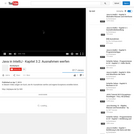
In diesem Video zeigen wir Euch, wie Ihr Ausnahmen werfen und eigene Exceptions erstellen könnt.
- Subject:
- Arts and Humanities
- Career and Technical Education
- Material Type:
- Lesson
- Provider:
- YouTube
- Author:
- theskylapse
- Date Added:
- 06/16/2015

In diesem Video zeigen wir Euch, wie Ihr Ausnahmen werfen und eigene Exceptions erstellen könnt.
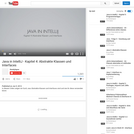
In diesem Video zeigen wir Euch, was Abstrakte Klassen und Interfaces sind und wie ihr diese verwenden könnt.
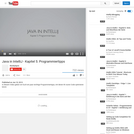
In diesem Video geben wir Euch ein paar wichtige Programmiertipps, mit denen Ihr euren Code optimieren könnt.
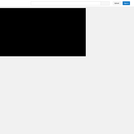
In diesem Video zeigen wir Euch, wie Ihr mithilfe des Form-Editors eigene Benutzeroberflächen programmieren könnt. Dies ist das letzte Video dieser Tutorialserie.
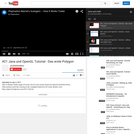
Hier in diesem Video zeige ich euch, wie ihr euer erstes Quad mit OpenGl zeichnen könnt...
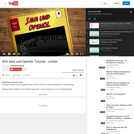
In diesem kurzen Tutorial zeige ich euch, wie ihr Lichter in Java und OpenGL mit Jogl einsetzt.

In diesem Video erzeugen wir unseren ersten eigenen 3-D Würfel.
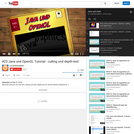
Diesmal schauen wir und das culling und den depth-test an einem kleinen Beispiel an :)
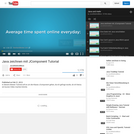
In diesem kleinen Tutorial soll es um die Klasse JComponent gehen, da ich gefragt wurde, ob ich hierzu ein kurzes Video machen könnte.
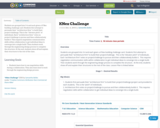
Students are grouped into 3-4 and each given a K’Nex building challenge card. Students first attempt to persuade their “architecture firm” to build their project/challenge. This is the “elevator pitch” of individuals. Each “architecture firm” votes on project/challenge to pursue and then collaboratively builds it. This requires negotiation communication skills within collaboration to get individual ideas to converge into a single build. Then students work through the engineering design process to complete the structure. At the end, students show off and explain their structures to the rest of the class.
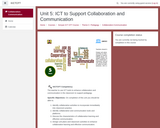
Welcome to this unit on ICT to support collaboration and communication. In this unit we will look at how we can enhance collaboration and communication in classroom teaching using various ICT tools. What tools do we usually use to communicate? Can we use the same tools to communicate in the classroom? Let us find out.
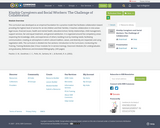
This curriculum was developed as an empirical foundation for a practice model that facilitates collaboration toward providing the highest level of service for at-risk children and their families. It teaches collaboration in nine areas: legal issues, financial issues, health and mental health, education/school, family relationships, child management, support services, fair and equal treatment, and general satisfaction. It is organized around five competency areas: respecting the knowledge, skills, and experiences of others; building trust by meeting needs; facilitating communication; creating an atmosphere in which cultural tradition, values, and diversity are respected; and using negotiation skills. The curriculum is divided into five sections: Introduction to the Curriculum, Conducting the Training, Training Modules (two 3-hour modules for in-service training), Classroom Modules (for undergraduates and graduates), References and Annotated Bibliography. (345 pages)Pasztor, E. M., Goodman, C. C., Potts, M., Santana, M. I., & Runnels, R. A. (2002).
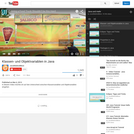
In diesem Video möchte ich auf den Unterschied zwischen Klassenvariablen und Objektvariablen eingehen.
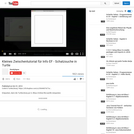
Tutorial für Info EF - Schatzsuche in Turtle

Every great teacher and every great school constantly work towards creating better learning conditions for students. Just as we hope our students become lifelong learners, we as educators should be constantly learning and improving. This education course is for school leaders of all kinds (from teacher-leaders to principals to superintendents) who are launching innovation in schools—starting new efforts to work together to improve teaching and learning.
You will complete a cycle of study, experimentation, and reflection to gain confidence and skills to lead instructional improvement efforts. Through experiential activities and assignments, you will begin working with colleagues to envision the next level of work for your team or organization, to launch a new initiative, and to measure your progress along the way. Based on the work of Prof. Justin Reich and Dr. Peter Senge, this course will focus on visioning and capacity-building, with an emphasis on collaboration and building partnerships with stakeholders at multiple levels.
At the end of the course, you will have started the process of launching an instructional improvement initiative in your school or learning environment, and you will better understand yourself as a leader and change agent. You will have made connections with peers who are also undertaking this important work.
This course is part of the Open Learning Library, which is free to use. You have the option to sign up and enroll in the course if you want to track your progress, or you can view and use all the materials without enrolling.

This five-day interactive and experiential workshop focuses on how leaders lead innovations that both promote social responsibility and produce business success. The workshop is organized around three main parts: observation, sense-making, and creating. During the observation phase, students spend a full day inside the Boston office of the design company IDEO and visit some of the most interesting proven innovators in corporate social responsibility such as Ben & Jerry’s, KLD, MBDC, Plug Power (fuel cell technology), PwC, Schlumberger, or core team members of the UN Global Compact. After returning from their company visits, students describe to one another what they saw and learned. In the final part of the Lab, students conceive and implement innovation projects that serve the needs of a local community. Each team presents its practical accomplishments on the final day of the Lab. Starting in 2004 this course will be renumbered as 15.975.
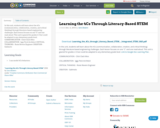
In this unit, students will learn about the 4Cs (communication, collaboration, creation, and critical thinking) through literature-based engineering challenges. Each lesson focuses on one "C" and one read-aloud. This unit is geared for grades 2-3 but could be adapted to any elementary grade level.
COMMUNICATION - Click Clack Moo
COLLABORATION - Iggy Peck Architect
CRITICAL THINKING - Rosie Revere Engineer
CREATION - Galimoto
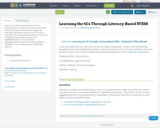
In this unit, students will learn about the 4Cs (communication, collaboration, creation, and critical thinking) through literature-based engineering challenges. Each lesson focuses on one "C" and one read-aloud. This unit is geared for grades 2-3 but could be adapted to any elementary grade level.
COMMUNICATION - Click Clack Moo
COLLABORATION - Iggy Peck Architect
CRITICAL THINKING - Rosie Revere Engineer
CREATION - Galimoto
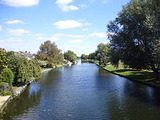
My group and I worked on discussing the flooding of the Ohio river in Cincinnati. The past few years there has been a spike in the flooding that has effect the river front of both downtown Cincinnati and on the other side of the river in Newport and Covington Kentucky. We met with a meteorologist to talk about the weather cycle and what is happening with the flooding. We thought that if we were in a real classroom we could talk about erosion and the issues that come when there is excessive flooding or the use of levees in helping to alleviate the flooding from the city.

In the 2021-2022 school year, I decided to try a new approach to my Book Talk Project by hosting a Literary Food Truck Festival with my students. For specifics on this school year's project, explore the attached lesson.